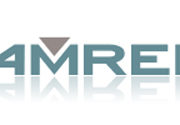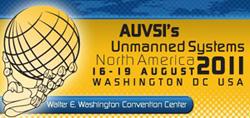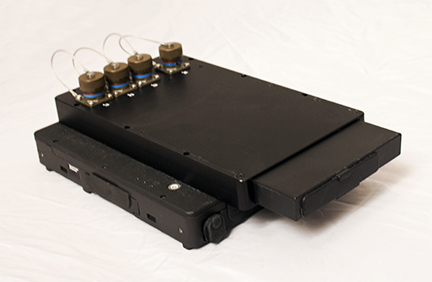 Recently, some clients asked AMREL to build an Operator Control Unit (OCU) for their Unmanned Ground Vehicle. No surprise there; we dominate that particular application. What was noteworthy was the specific form factor that they requested. They wanted it to be a wearable computer, worn on the wrist.
Recently, some clients asked AMREL to build an Operator Control Unit (OCU) for their Unmanned Ground Vehicle. No surprise there; we dominate that particular application. What was noteworthy was the specific form factor that they requested. They wanted it to be a wearable computer, worn on the wrist.
We ran a simple experiment with the clients. We strapped a small computer to their wrist and had them run some typical UGV commands. Soon, they discovered that their arms grew tired supporting the computer. The clients agreed to have their OCU installed in the traditional, if less exotic, form factor of a handheld.
Notice that the wrist-mounted form factor wasn’t discarded for technological reasons. AMREL has become quite adept at developing small, powerful, ATOM-based computer platforms, which would be perfect for wearable solutions. Rather, this innovative approach was discarded, because the wrist form factor proved impractical for this particular use. Read more



 Maritime conditions are especially difficult for communications, and nowhere are they more important. Corrosive salt air, rough storms, and “dead areas” in the belly of a ship all conspire to damage critical equipment and sabotage the transmission of life-saving information. In the August issue of U.S. Coast Guard Forum,
Maritime conditions are especially difficult for communications, and nowhere are they more important. Corrosive salt air, rough storms, and “dead areas” in the belly of a ship all conspire to damage critical equipment and sabotage the transmission of life-saving information. In the August issue of U.S. Coast Guard Forum, 





 emphasis placed on acquisition of Commercial Off The Shelf (COTS) products by the Department of Defense (DoD). In the past, COTS constituted a few percent of all items purchased by the DoD. While the overall amount is still low, some weapon systems are composed by as much as 50% of COTS. What are the good, the bad and the ugly about COTS?
emphasis placed on acquisition of Commercial Off The Shelf (COTS) products by the Department of Defense (DoD). In the past, COTS constituted a few percent of all items purchased by the DoD. While the overall amount is still low, some weapon systems are composed by as much as 50% of COTS. What are the good, the bad and the ugly about COTS? importance of “specs.” Go to any biometric solution provider’ workplace, and you will see highly trained professionals closely examining the latest RFP, eagerly analyzing the specifications, as well as the Scope of Work.
importance of “specs.” Go to any biometric solution provider’ workplace, and you will see highly trained professionals closely examining the latest RFP, eagerly analyzing the specifications, as well as the Scope of Work. time; vibrate it all day for days at a time; subject it to altitude variations of 0 to 10,000 feet; operate it in temperatures reaching 130 degrees Fahrenheit; virtually soak the laptop in water for two days; expose it to humidity of 95 percent for prolonged periods. While this may seem like a specially designed test to force a laptop to fail, the truth is that this was an actual situation.”
time; vibrate it all day for days at a time; subject it to altitude variations of 0 to 10,000 feet; operate it in temperatures reaching 130 degrees Fahrenheit; virtually soak the laptop in water for two days; expose it to humidity of 95 percent for prolonged periods. While this may seem like a specially designed test to force a laptop to fail, the truth is that this was an actual situation.” They are surrounded by powerful electromagnetic interference (EMI) generated by radios, radar, microwave transmitters, other computers, and a wide assortment of electronic equipment. Battlefield computers have to contend with an exceptional level of interference created by military-specific items, such as IED jammers. Of course, EMI protection has grown in importance with the adoption of net-centric warfare doctrine.
They are surrounded by powerful electromagnetic interference (EMI) generated by radios, radar, microwave transmitters, other computers, and a wide assortment of electronic equipment. Battlefield computers have to contend with an exceptional level of interference created by military-specific items, such as IED jammers. Of course, EMI protection has grown in importance with the adoption of net-centric warfare doctrine. small part of the Total Cost of Ownership (TCO). Platform support, customization, integration, connectivity, and inadequate durability may make your “bargain” very expensive. Will your rugged computer be good for your ROI five or ten years from now or just for today?
small part of the Total Cost of Ownership (TCO). Platform support, customization, integration, connectivity, and inadequate durability may make your “bargain” very expensive. Will your rugged computer be good for your ROI five or ten years from now or just for today?